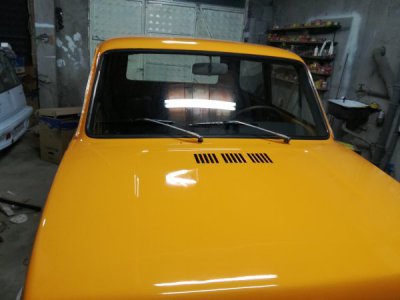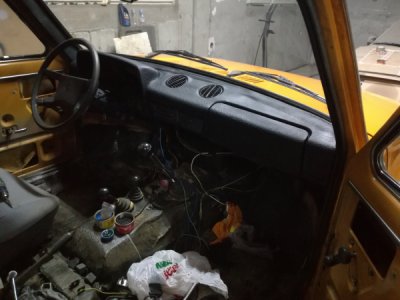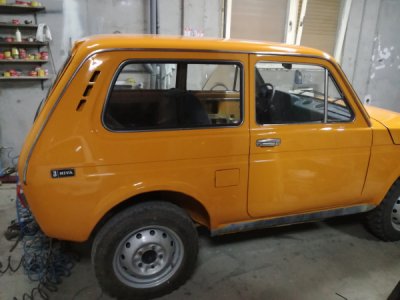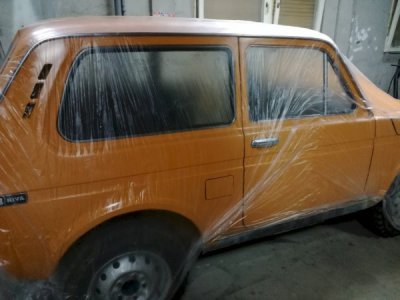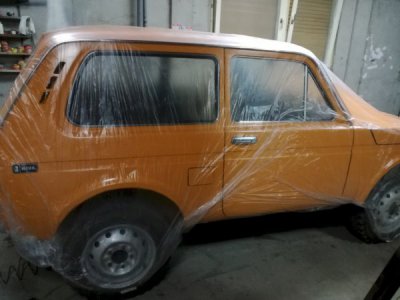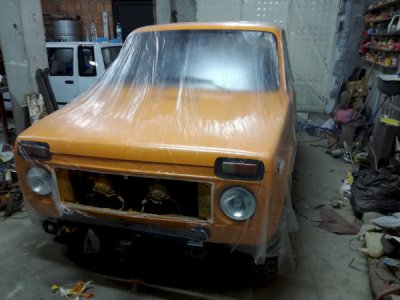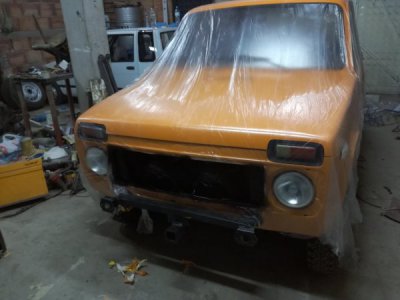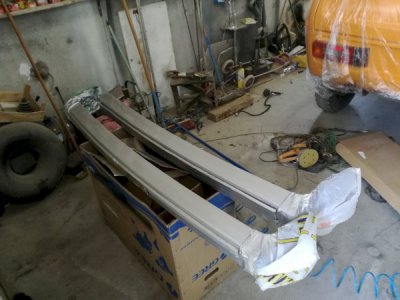- Joined
- Nov 23, 2014
- Messages
- 2,634
POTD was fixing a bracket to hold a Tormach tool holder plate to my mill. The previous owner 3-D printed a plastic bracket that set over the chip pan with the aluminum tool holding plate screwed in place. Went out to the shop and noticed 20 tool holders setting on the floor, 3-D printed bracket failed and dropped everything to the floor.
3-D printed "U" bracket failed under the load of 20 tool holders
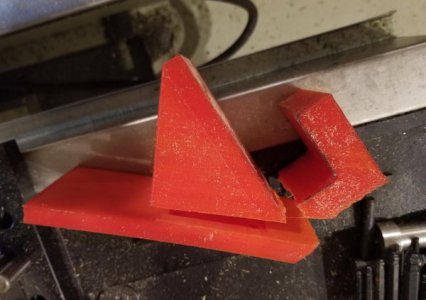
Started with a block of Delrin and milled an angled face and rabbet to accept a 1/16” thick piece of bent stainless steel from my scrap bin. Drilled and tapped some ¼”-20’s and bolted it together with button-head cap screws. Works great though probably will need to make something different once I build a full enclosure for the mill.
Squaring up a block of Delrin and facing a surface with an angle where the tool holder plate will attach
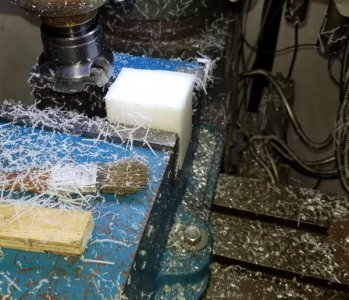
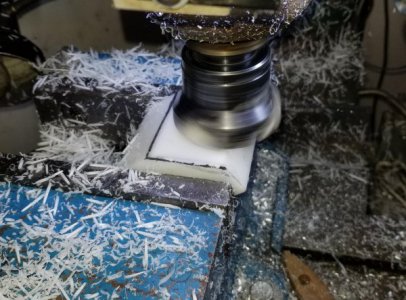
Cutting a rabbet in the Delrin so the block nests over the mill's chip pan edge
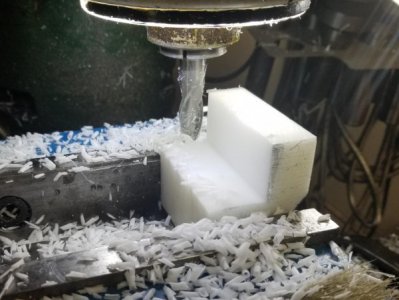
Spotted and clearance hole drill a 1/16" stainless steel bracket
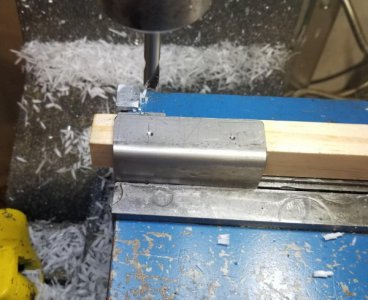
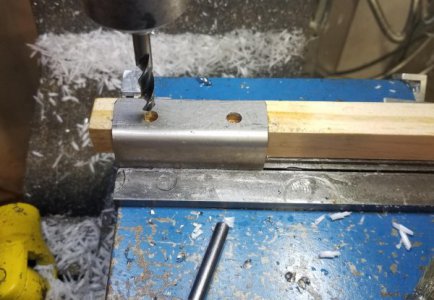
Transferred the bracket holes with a Sharpie and found center with a laser center finder
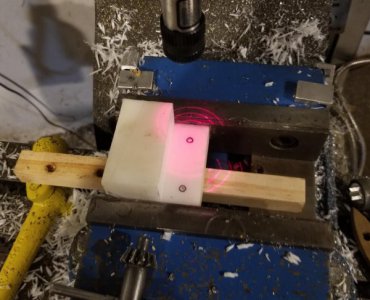
Spot, tap drill and tapped the bracket holes
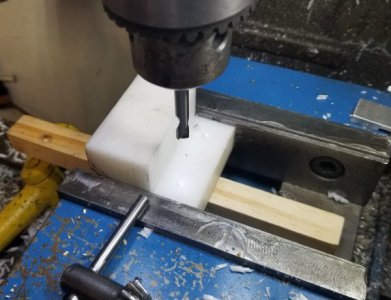
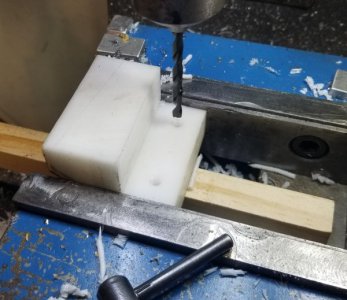
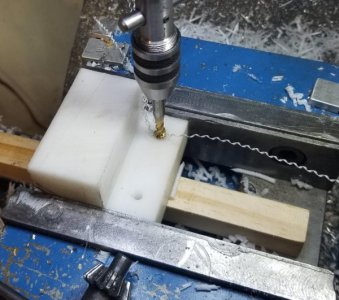
Flipped the block and spotted, tap drilled and tapped the holes for attaching the tool holder plate
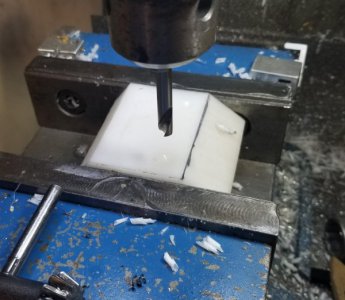
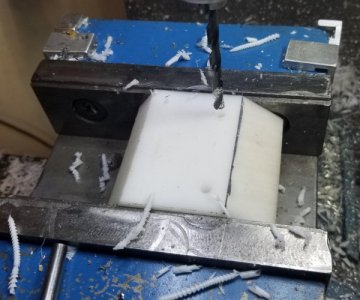
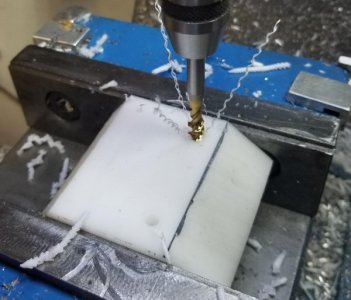
Bottom view of the plate. The Delrin block and stainless bracket slip over the edge of the chip pan
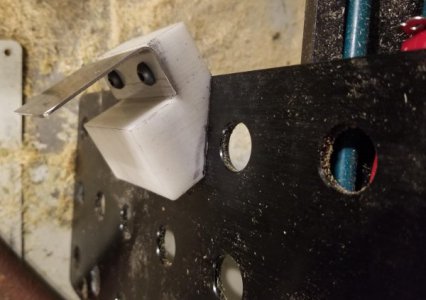
Good to go! I can stand on this one without fear of finding 20 tools on the cement shop floor.
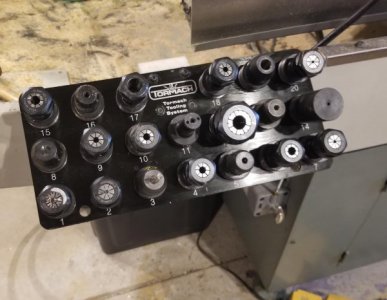
Thanks for looking,
Bruce
3-D printed "U" bracket failed under the load of 20 tool holders

Started with a block of Delrin and milled an angled face and rabbet to accept a 1/16” thick piece of bent stainless steel from my scrap bin. Drilled and tapped some ¼”-20’s and bolted it together with button-head cap screws. Works great though probably will need to make something different once I build a full enclosure for the mill.
Squaring up a block of Delrin and facing a surface with an angle where the tool holder plate will attach


Cutting a rabbet in the Delrin so the block nests over the mill's chip pan edge

Spotted and clearance hole drill a 1/16" stainless steel bracket


Transferred the bracket holes with a Sharpie and found center with a laser center finder

Spot, tap drill and tapped the bracket holes



Flipped the block and spotted, tap drilled and tapped the holes for attaching the tool holder plate



Bottom view of the plate. The Delrin block and stainless bracket slip over the edge of the chip pan

Good to go! I can stand on this one without fear of finding 20 tools on the cement shop floor.

Thanks for looking,
Bruce



